In our busy lives, making our homes calm and healthy is really important. A great way to do this is by adding indoor plants. These plants not only make your home look nice, but some also help clean the air and give off more oxygen. Imagine your home filled with green plants that not only look great but also help you breath easier.
Whether you’re good with plants or just starting out, this guide will show you the top 10 indoor plants that are great at making oxygen. Each plant has its own special benefits. Let’s explore the best indoor plants for oxygen, see how they can improve your home’s air quality and learn how to take care of them.
Pothos
Common name: Money plant, Devil’s ivy, Golden pothos , Hunter’s rove
Botanical name: Epipremnum aureum
Pothos (Epipremnum aureum) ,also called money plant is one of the easiest plant to grow indoors. It is best for cleaning the air, making it a great choice for your home. It’s very popular in India and is believed to bring success and fortune. You can grow it as a hanging plant or a climber, and it looks nice both ways.
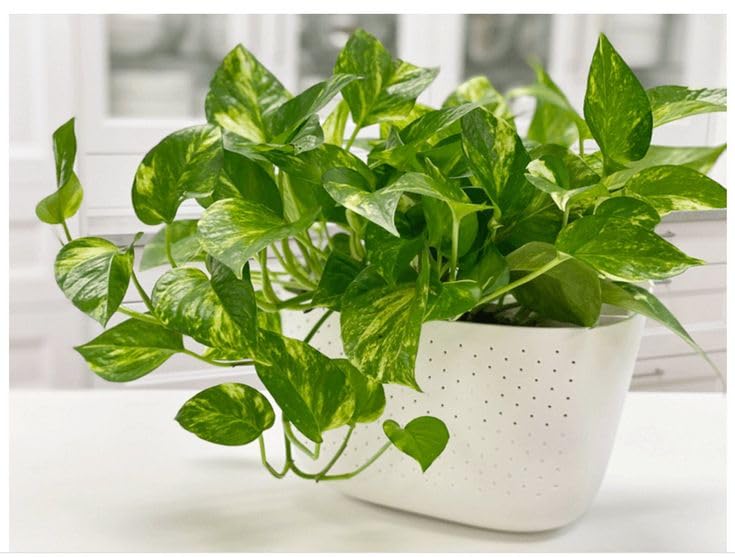
This plant is excellent for air purification and helps remove pollutants like benzene, formaldehyde, xylene, and toluene from the air around it. Also the Money Plant also does well in indirect light.
Snake plant
Common name: Saint George’s Sword , Mother-in-law’s tongue , Snake plant
Botanical name: Sansevieria trifasciata
The Sansevieria trifasciata, also known as a snake plant, is a common houseplant from Asia and Africa. It has long, upright green leaves that look almost like fake plants.
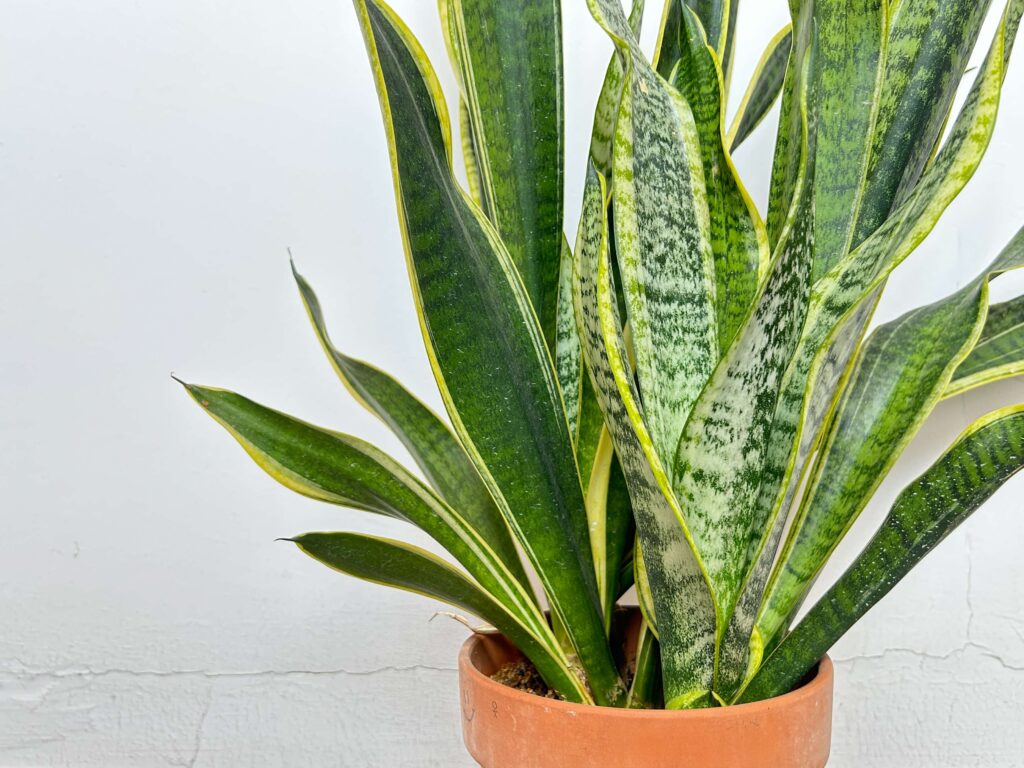
People like to use snake plants for home decoration because they look nice, are easy to take care of, and don’t need much water.Snake plants are mostly safe but are a bit toxic if eaten. Their leaves have a poison that can cause swelling and numbness on the tongue if eaten a lot. It’s best to keep this plant away from children and pets who might chew on it.
Benefits of snake plant:
- Snake plants are one of the particular plants that converts Carbon dioxide in to oxygen at night which makes it an ideal plant to keep in your bedroom
- It has the ability to remove harmful pollutants and carcinogens like co2, benzene, formaldehyde, xylene, trichloroethylene and toluene
- Snake plants can handle shade, direct sunlight, being watered too little, drafts, and dry air. They don’t need to be repotted often and rarely get pests.
- Snake plants release oxygen and add moisture to the air, which can help reduce airborne allergens like dust and dander.
Spider plant
Common name: Ribbon plant, Spider ivy, Walking Anthericum , Comosum
Botanical name: Chlorophytum comosum
The spider plant, Chlorophytum comosum, is a very common and well-known houseplant. It’s popular with beginners because it’s easy to grow, can be neglected, and can live in almost any condition. It’s called a spider plant because the small baby plants on long stems look a bit like spiders.

Benefits of Snake plant
- It can thrive in various climatic conditions whether over watered or under watered. it also increases humidity of the room.
- Studies have shown that spider plants are good at cleaning indoor air by absorbing chemicals like formaldehyde, xylene, benzene, and carbon monoxide in homes or offices.
- Spider plants are safe for pets. But Swallowing small parts of the plant can cause chocking or upset the stomach. Make sure to place away from the pets.
- Research shows that having spider plants in hospital rooms helps surgical patients recover faster compared to rooms without the plant. These patients need less pain medication, have fewer problems with blood pressure or heart rate, feel less anxious or depressed, and leave the hospital sooner.
Areca palm
Common name: Golden cane palm, Yellow palm , Bamboo palm , Butterfly palm
Botanical name: Dypsis lutescens
Areca palms are tall, attractive palms that grow in clumps, with smooth, sometimes golden trunks that look like bamboo. Their fronds are narrow and full, similar to bamboo leaves. In the summer, small, bright yellow flowers bloom below the fronds, though they are not very noticeable.This great air purifier is pet-friendly and easy to grow. Its delicate, curved leaves give a tropical feel to any space and can adapt to various growing conditions.
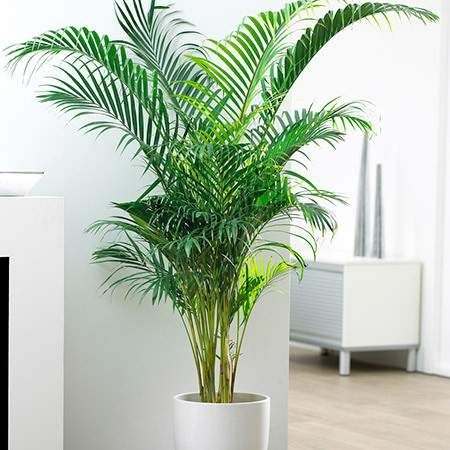
Benefits of Areca plant
- Areca palms are good in providing cleaner air. Its like a green air filter placed in a corner of your room .
- It is a easiest plant to grow indoors and are beneficial for people with respiratory problems and dust allergies.
- The Areca Palm might help reduce stress. Studies suggest that just having indoor plants around can lower stress levels, improve mood, and boost productivity.
- They can thrive well in any lighting whether it is a sunny window side or a shaded hallways.
Anthurium
Common name: Flaming flower, Tail flower, Painter’s palette, Oil clot flower, Lace leaf.
Botanical name: Anthurium andraeanum
Anthurium leaves are attractive with their bright green colour and glossy shine, but it’s the flowers that make this tropical houseplant truly stand out. Is is also called flamingo flower. This popular houseplant adds colour with flowers that last about six weeks. Anthurium flowers can be red, pink, purple, orange, white, or black. To make it bloom, give it bright light and fertilizer. Each flower lasts for six or more weeks. Cut off the flower stems at the base when the central bloom starts to turn brown.
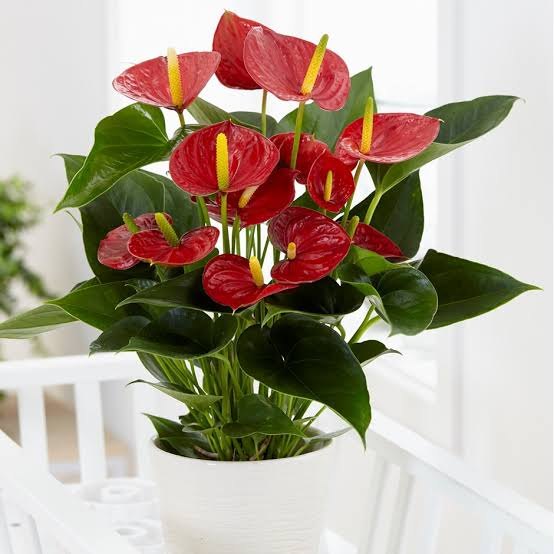
Benefits of Anthurium
- Anthurium is an easy-to-care-for houseplant that prefers bright, indirect light.
- It thrives indoors and acts as a natural air purifier which makes it the best indoor plant for oxygen
- Known for its air-purifying abilities, Anthurium removes pollutants like formaldehyde, ammonia, and xylene, improving indoor air quality.
- A healer in Belize uses anthurium leaves for arthritis and rheumatism.
- Boil the leaves in a pot, then sit over it with a blanket.
- Wrap the leaves around the neck and back to relieve muscle aches and cramps.
Jade mini plant
Common name: Jade plant. Lucky plant, Money tree
Botanical name: Crassula ovata
Crassula ovata, also known as the Jade plant, is a popular and unique houseplant that thrives in dry conditions and needs minimal watering. It has thick, fleshy, oval-shaped leaves on a sturdy stem and is native to Africa. Easy to care for, it’s perfect for both beginners and experienced plant lovers. This simple yet detailed guide will walk you through the best care routine for Crassula ovata, including its watering schedule, sunlight needs, soil requirements, and more.
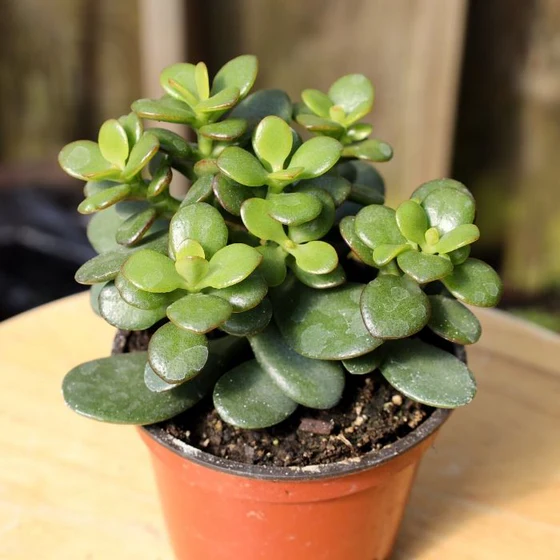
Benefits of Jade plant
- Keeping a jade plant in your house not only improves its aesthetic quality but also it scrapes of all the toxic impurities in air ,making it good for breathing.
- Jade plants are wealth magnets. In many cultures jade plant is a sign of wealth and good fortune.
- No maintenance needed, they can thrive in harsh conditions however avoid keeping it in direct sunlight.
- Propagating their offspring are easy, just snip a stem and plant it . It can grow in t a new plant.
Oxycardium
Common name: Heart leaf philodendron, Vilevine
Botanical name: Philodendron oxycardium
The Philodendron oxycardium green is a striking plant with dark green, heart-shaped leaves. It is known for being an indoor plant that purifies the air and adds lush foliage to any space.T he Heart-Leaf Philodendron, also called the sweetheart plant because of its heart-shaped leaves, is a very popular and easy-to-care-for houseplant. In tropical areas, it can live outside, but in most places, it is kept indoors for oxygen. This fast-growing vine rarely blooms indoors, even though it can bloom anytime during the year. It is an evergreen vine that does well in partial shade and moderate temperatures.
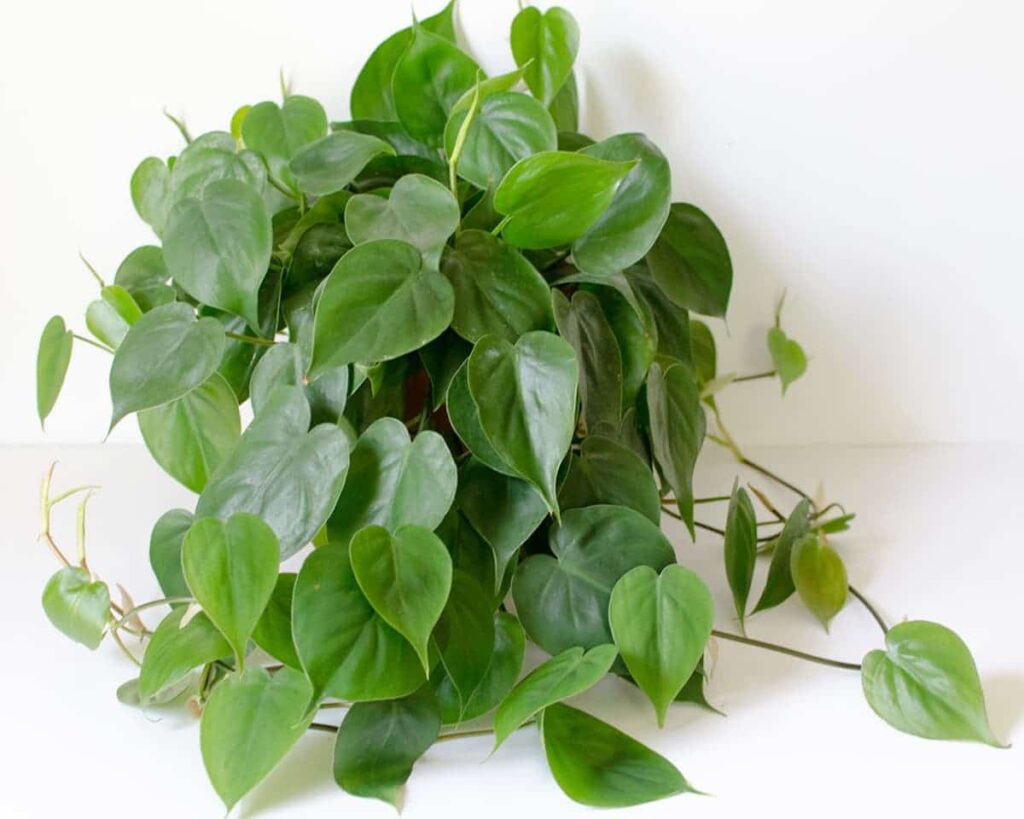
Benefits of Oxycardium
- The heartleaf or sweetheart philodendron has shiny, heart-shaped green leaves and looks great on tables or as a hanging plant.
- These philodendrons are very popular in homes and offices because they thrive even with little care and are hard to kill.
- They help remove toxins like formaldehyde from the air.
- Water well, then let the top half of the soil dry out before watering again. Yellow leaves mean too much water, and brown leaves mean the plant needs more water. They can also survive in low light.
zz plant
Common name: zz plant, Aroid palm, zuzu plant, Eternity plant,Fortune tree
Botanical name: Zamiculcas zamiifolia
The ZZ plant is strong and hardy, symbolizing growth, endurance, and a long life, which is why it’s called the “eternity plant.” Many cultures also see it as a lucky plant, representing good fortune, prosperity, and stability.
In the wild, the ZZ plant has green or yellow flowers that look like peace lily flowers. However, it rarely blooms indoors.

Benefits of ZZ plant
- The plant cleans the air by removing toxins like xylene, toluene, and benzene.
- ZZ plants are low-maintenance and can survive with very little sunlight and minimal watering because their roots store water.
- These plants can help reduce stress and have positive effects on health.
- In parts of Africa, ZZ plants are used medicinally, especially for treating earaches with their leaves.
Chrysanthemum
Common name: Mum, Daisy mum,Florist’s mum ,Sevvanthi
Botanical name: Chrysanthemum indicum
Chrysanthemums are pretty gift plants that you can find all year. They last a long time after being cut, so they are often used in corsages and floral arrangements. Mums are popular houseplants that can bloom in low light and need little care, just the right soil and drainage. This colorful flowers can brighten up any room.
However, chrysanthemums are toxic to cats and dogs. If your pet eats them, it can cause diarrhoea, skin irritation, drooling, vomiting, and loss of coordination.
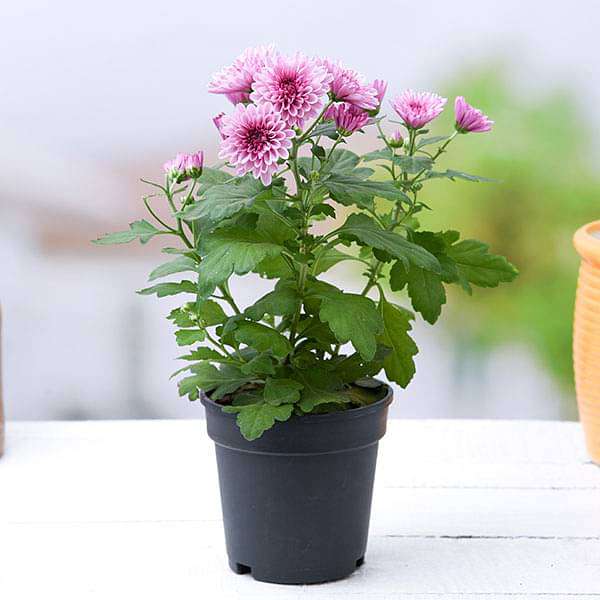
Benefits of Chrysanthemum
- Antioxidant, Antimicrobial, Anti-inflammatory properties makes the plant medically valuable
- chrysanthemum flowers dry quickly as they can be used in garlands and bonquets.
- It is a good indoor plant for oxygen which makes it great air purifier by absorbing harmful air pollutants.
Aloe Vera
Common name:Aloe , Medicinal Aloe, Burn plant
Botanical name: Aloe barbadensis miller
Aloe vera is famous for its benefits, but not everyone knows that it also cleans the air and increases oxygen. The Aloe Vera plant removes toxins like aldehydes and benzene from the air.
Unlike most plants, it produces oxygen at night, making it great for bedrooms and other closed spaces. Aloe vera has broad, pointed leaves with clear gel inside and grows slowly. It is used in many treatments and natural therapies worldwide.
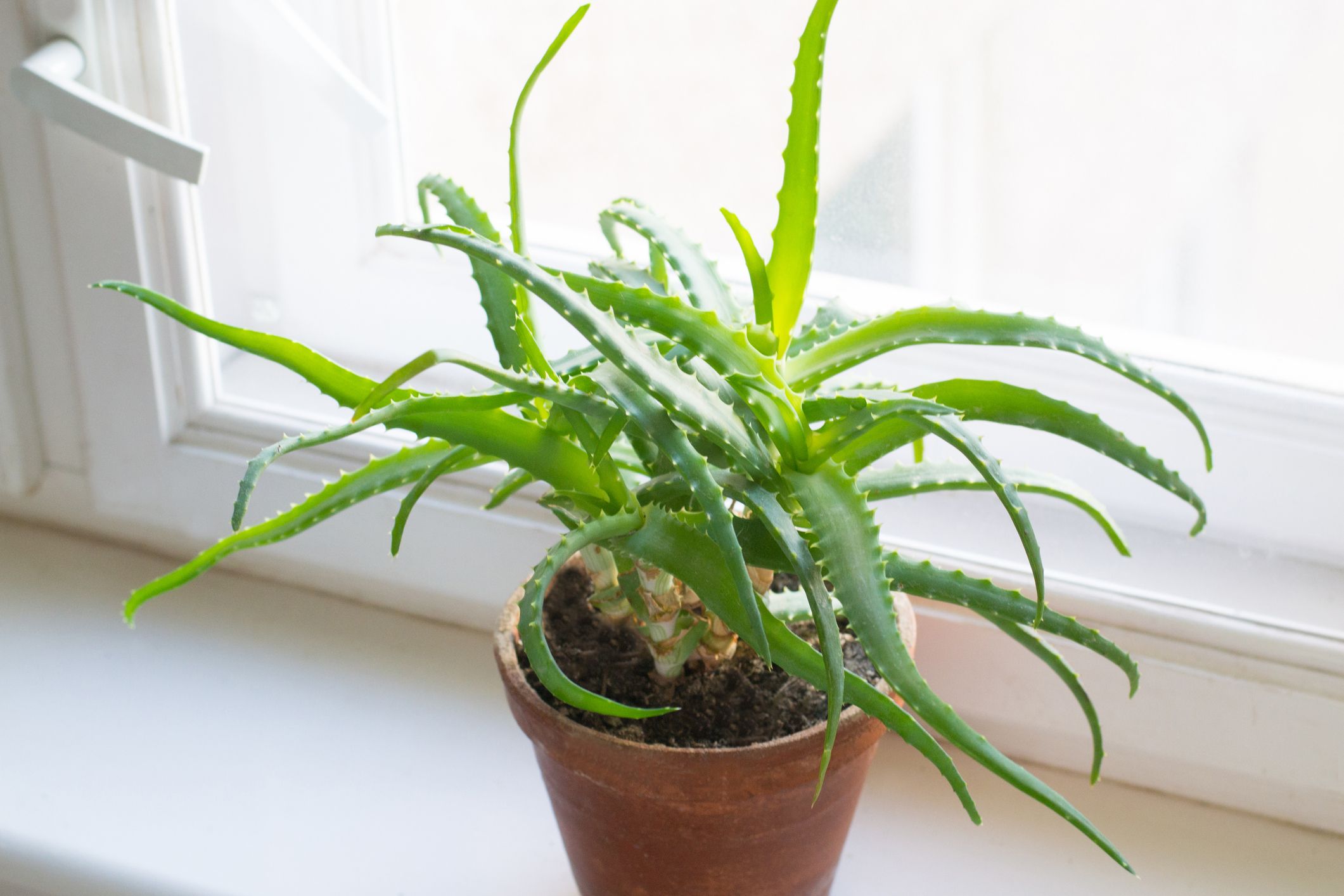
Benefits of Aloe vera
- Skin Care: Aloe vera gel is soothing and moisturizing, making it great for treating sunburns, minor cuts, and skin irritations.
- Hair Care: Aloe vera can nourish the scalp and hair, promoting healthy growth and reducing dandruff.
- Digestive Aid: Drinking aloe vera juice may help with digestion and relieve symptoms of heartburn and irritable bowel syndrome (IBS).
- Immune Support: Aloe vera contains antioxidants and vitamins that support the immune system and overall health.
- Wound Healing: Aloe vera’s anti-inflammatory properties can help speed up wound healing and reduce inflammation.
When trying to improve sleep and live healthier, we often forget about indoor air quality. These ten plants release oxygen at night and can clean the air you breathe while you sleep. Besides cleaning the air, they also add a bit of nature and beauty to your bedroom.
To keep these plants healthy and helping your air quality, take good care of them. Put them in well-lit spots, water them correctly, and sometimes add fertilizer. With a little care, these plants can help you sleep better and make your home greener and fresher. Also check out some Healthy indoor plants for home decor.
Next time you want to make your sleep environment better, think about adding one or more of these oxygen-producing plants to your bedroom. You’ll sleep better and wake up to a healthier, more lively space. Breathe Easy!
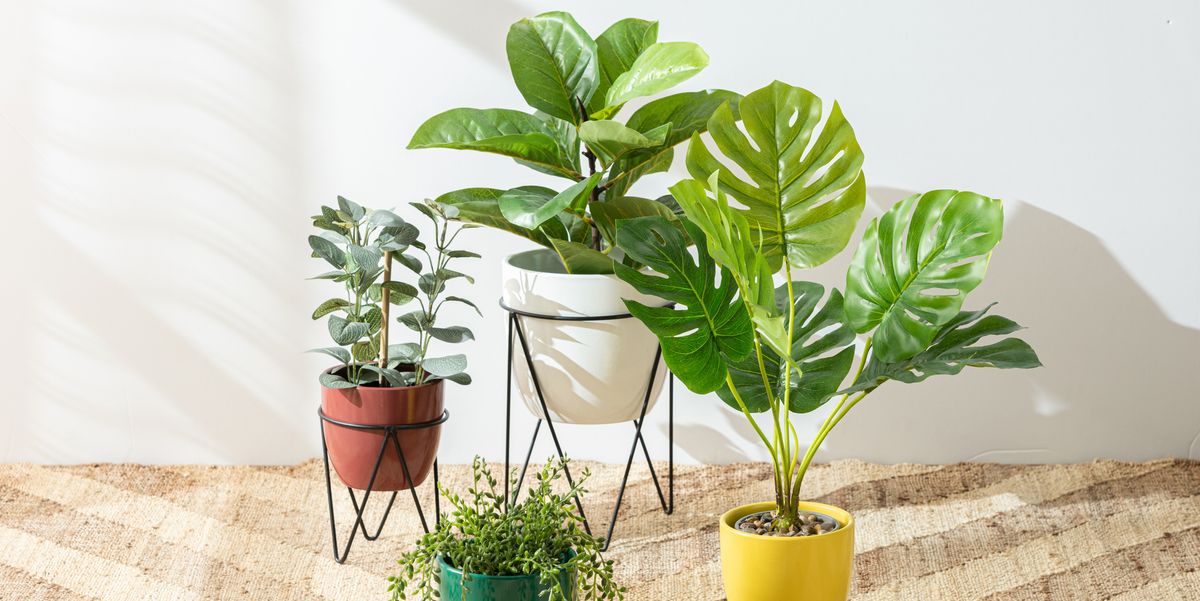


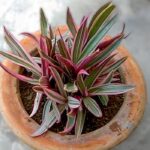

Leave a Reply